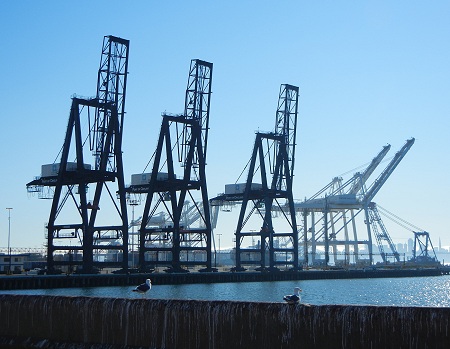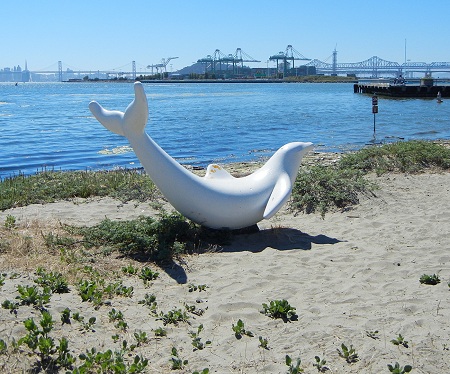I’m attending the Third International Conference on Earthquake Early Warning, which is happening at UC Berkeley through Friday. It’s a lively gathering of specialists and officials from earthquake country all over the world. What’s galvanizing everybody is the possibility of dramatic progress in California, now that the government has passed a law that establishes a statewide early-warning system modeled on ShakeAlert, which has been quietly beta testing for more than two years.
It came up during discussion today that the West Coast has five of America’s largest seaports, and a major earthquake that disables one or more of them will affect not just the nation’s, but the entire world’s economy. OK: the West Coast has three areas that produce major earthquakes. Ours, the Bay area’s part of the San Andreas fault complex, is the least of them. The 1906 San Francisco earthquake (M 7.8) and the similarly large 1868 Hayward quake? Those are our signature quakes, and we’re third on the list. Southern California is capable of larger ones (M 8), and Cascadia, which reaches from Cape Mendocino up past the Canadian border, produces the largest quakes by far (M 9).
A Big One that knocks out Long Beach and Los Angeles harbors will not affect Oakland. Neither will the Monster One that disables Seattle, Tacoma and Portland. Oakland Harbor will be the backup port of call after either of those events. And of course they’ll share the load if we’re out of action.
In any case, Oakland Harbor is a natural facility for using an early-alert system. So is Oakland Airport—imagine an alert coming in to the control tower that strong shaking will arrive in 20 seconds. This is exactly the kind of rapid decision-making information that the airline community is trained to respond to already. I foresee our airport and our port being early early-warning adopters. BART is already part of the ShakeAlert beta testing network. Watch those guys.


Leave a reply